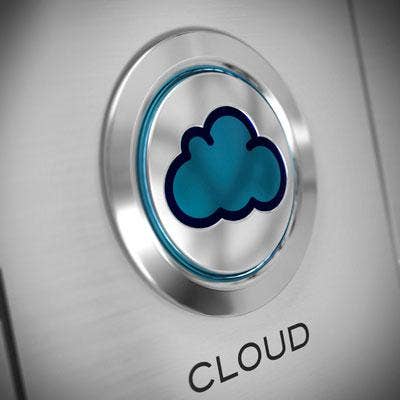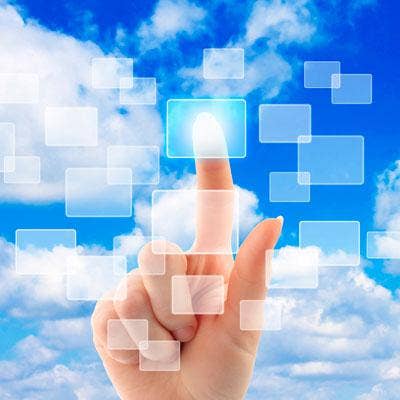Microsoft Channel Chief Schuster On Shifting The Sales Focus To CSP, Bringing In Partners Earlier And Offering 'Richer' Cloud Compensation Than Competitors
Schuster On The Record
As Microsoft's fiscal year of massive change comes to a close, the signs are everywhere that many of the company's big bets have paid off. That's according to Microsoft Channel Chief Gavriella Schuster, who sat down with CRN this week to talk about how channel partners fared during the transformational year, which began with a company-wide reorganization and channel overhauls announced at the Inspire partner conference last July. Schuster, who is corporate vice president for Microsoft's One Commercial Partner (OCP) organization, also spoke about the opportunities ahead for solution providers in areas such as the Azure cloud platform and Office 365 now that a firmer foundation for partnership is in place. Microsoft, Schuster said, has "turned the corner on our partnership" efforts. "A lot of other players in the industry have very large direct businesses. We have been partner-led forever," she said. "We continue to be just as invested as we elevate their services to the same level as our services."
Schuster sat down with CRN at Microsoft's headquarters in Redmond, Wash., ahead of Inspire 2018, which is taking place July 15-19 in Las Vegas. What follows is an edited portion of the conversation.

What has been the outcome for partners of the major organizational changes over the past year?
It was a big change. I was a little nervous, because it was a change on our partnering structure in a sea of Microsoft change. And I was [wondering], "Are we going to be able to execute? We have really big goals." And we had a lot of changeover of people. Essentially we had partner sales teams embedded in each segment-selling team. And because they were embedded with our sales teams, they were focused obviously on quarter-to-quarter sales. So we decided to put people out into the field, but they reported to us. They were responsible for helping to recruit new partners and build new practices with partners. Because nobody in the field is going to invest that time when they're just focused quarter-to-quarter.
And so the One Commercial Partner team did two things. One, it brought all of those teams that were scattered everywhere into a single organization. So if there was anything about partnering -- building something with a partner, selling something with a partner -- it happened within the One Commercial Partner team. And the second change is that we separated building things with partners and thinking about their business, and selling with them as two separate things. So we could have the incentive structure for those two roles be very different.

How did these changes affect partners initially?
It meant that we had to take a bunch of these people that were called partners sales execs and decide, are they really more of a building-something-with-partner person or a selling-something-with-partner person? And so that was the nervousness -- now people have to get new jobs. And we have to get them in place, and we have to execute. And in the meantime partners lose the people that they had been working with, in a lot of cases. So then you have to re-establish relationships. We managed to get through that pretty quickly. And the good news is, even from the moment that I talked about that at Inspire, partners understood it. Externally, people understood what we were doing. Whereas internally, people were like, why are we doing this change? So we actually got off to a fairly strong start. If you look at our earnings, we've had the best year that Microsoft has ever had, because a lot of this actually came together really fast. And I think it was because the changes--not just the ones we made with the partner team but across the whole sales organization--really made a lot of sense.

What are some of the indicators that point to success from the changes?
We've grown Azure revenue 98 percent year-over-year. And a lot of that has been because of the solutions and services that we've built with partners. Partners account for about 80 percent of that growth. So it's making sure that they have the right applications and that we're tracking the way the applications work, and which customers we're selling into. And then getting another partner in there to help deliver the service and manage the service for the customer. Because that's when the real growth happens. So when our partners get involved in managing a service with a customer, the consumption growth is four times faster.

Are your field salespeople bringing in partners earlier now to help drive consumption?
Yes. The evidence of that is, we do outbound opportunities and inbound opportunities, and there is actually about a 50-50 blend. We've done about 50,000 outbound opportunities, and they've done about 48,000 inbound opportunities. So there's a very nice blend of ones partners are bringing us and ones we're bringing partners in. And we see the sales stage at which it happens. And so we do see it coming in a lot closer to a 20-40 percent sales stage, rather than we used to be around a 60-percent sales stage. When it's at 20 [percent], it's just a sales qualified lead. And at 40 percent you've identified that there's an actual opportunity and who the actual buyer is. At 60 percent, there's going to be a POC [proof of concept] or a pilot. Typically [in the past] we were bringing partners in when we were ready for a POC. Now we're bringing them in as soon as we see that it's a sales qualified lead.

And bringing in partners at an earlier stage is typical now?
Yes. Just one year ago it was at the 60-percent stage. And then we've also seen an uptick in the partner communities--the number of new partners entering Microsoft's ecosystem. About 7,000 a month are coming into the ecosystem. So that's always a good sign that we're attracting new talent. If you look back three years ago, I think it was about 2,500 a month. And then two years ago, on average, we were somewhere like 4,000 or 4,500. Then we've just seen it continue to climb. That probably could also have to do with the world's economy getting better and people starting new businesses, too. But it's pretty awesome.

Last year at Inspire you talked about reducing conflict between the Enterprise Agreement licenses and CSP (Cloud Solution Provider) program. How has that gone?
We are on a journey. I've been at Microsoft for a really long time. Back in 2000, I actually introduced the EA. And the transition was challenging because we were going from packaged services -- boxes -- to enterprise licensing back then. And what sellers really liked is they liked getting the full credit for that box. And we moved to paying them one year at a time, and it took us a while to get them to flip over on that. So now we're moving from almost 20 years of this enterprise licensing, and we're saying now we're going to move to CSP, which is monthly billing. So you move from annual to monthly -- it's almost the same problem. But the thing we're trying to help our sellers understand is that it grows month over month. When you get a customer in and they're doing month over month, it grows much faster. Because if you just try to capture all of that one year at a time, the customer's never going to believe you on how much it's going to grow. So they're only going to pay you for less.

How close are you to fixing the issue of EA-CSP conflict?
You've got to get a couple years of that under the belt of the seller for them to understand that. And so we are in the process. We've been doing a lot of things with our sellers to help them understand it. And customers can actually have more than one license with Microsoft -- especially on Azure. They might've bought Azure in an EA for a specific workload, like an SAP workload. But then when a partner comes in and says, "I can actually help you with all of your CRM services, and I'm going to help you move those into Azure" -- they can have both of those at the same time. Every time we hear one of these [claims]--"no, they already have an EA"--[we say] yeah and we can also have this partnership.
Did account execs respond as quickly as you were hoping, or were you hoping they would get on board a little quicker?
I knew from my experience that it was just going to take us getting the really influential ones on board. It's the same account executives who know that it takes a village and you want the village all into your customer at the same time. Versus those account execs who think, go away, I want to control the whole thing. It's gotten progressively better throughout the year.

Are there additional measures that are coming to further reduce the EA-CSP conflict?
There are. Last year with Azure we said we're only measuring everyone on consumed revenue. But then there were still pockets in our management process where we tracked billed revenue. What we realized is, we should not track it anywhere. Because any place you track it, suddenly people think that that's important. And so this year we're moving to, we're not even going to talk about it. So we are making a few more of those kinds of adjustments.
And the other thing is that we have signed on a lot of partners into CSP agreements this year, really big partners. We just signed a partnership a few days ago with Fujitsu. Over the course of the last two quarters, we've signed big agreements with Infosys and HCL and Accenture and DXC. When our field hears those partners are going to come in and sell CSP with them, then they go, "OK, I better make sure that happens, because I want those partners with my customer." So it's been good. It's a journey. At the beginning of the year, probably for every two opportunities, you'd have a conflict half the time. Now it's probably one out of 15. I can tell from my inbox.

Is Microsoft also focusing on compensating partners based on Azure usage?
We have moved away from paying [partners] on the upfront sale. Now, we're paying them month-to-month as consumption grows. We did learn this year that there is a downside of doing that for some services where there is a larger upfront investment selling expense for a partner--at least until they build a stable business around it. So, this year, we are introducing a new customer-add kicker. In that initial year, [partners] are getting more because of the money they put into the sell. For Azure, let's say the partner gets an 8 percent rebate for consumption. Then, we have this new customer-add where if a customer consumes, say, more than $1,000 in Azure over the first three months, the partner gets $4,000. It's a campaign we are running right now. It basically pays you as long as you get the customer up to a certain threshold in the first three months, and [the partner] almost gets back the amount of dollars that the customer paid us because it took that much to get them started. After that, [the partner] gets paid on the consumption, and then [that revenue] just grows from there.

How competitive is compensation for Azure compared to the compensation for partners offered by hyperscale cloud competition?
The compensation is very competitive. The profitability is much higher with Microsoft compared to competitors [based on] consumption. When you combine the margins that a partner can make, plus the rebates associated with it, compensation is definitely richer.
Why should partners work with Azure?
There's a number of reasons why partners should choose Azure. First of all, we have deeper and more advanced services. Everyone has the commodity-level services, and they cost customers about the same. There's not a lot of inherent value to either the customer or the partner. But we have a lot of advanced services and those are all wired up for partners to use. They can manage things on behalf of a customer [such as] security, or their AI or their SAP practices … and those services cut across our solution areas. Because Dynamics 365 is built on Azure, if [a customer] wants to move into business applications, the partner can create a much richer experience for your customer. Office 365 and OneDrive are very connected to Azure. We also have the Azure Hub, where if a customer has server licenses on-premise, and they move them into Azure, they can use that same license. So they don't have to pay in another way, and that benefit doesn't exist on something that's not Azure.

How does Microsoft's hybrid cloud strategy compare to the competition?
As customers are making this rush to the cloud, they are recognizing the things that they still aren't ready to move to the cloud. Many are in this hybrid state. We have a better hybrid story than anyone else in the industry, especially with Azure Stack, which can be your intelligent edge device. We've had a number of customers, like oil companies, for example, where you're not going to have everything, like an oil rig, connected, but you want to have all the same services and sometimes you may turn on some connection. Azure partners who are working with specific industries know they can create a consistent experience for the customer.

After committing to shrinking and simplifying the number of incentive programs, will Microsoft continue to make incentives richer for partners?
Definitely. One of the things that we have learned throughout the year is around which things still seemed complicated, and now we are at a place where the areas we still have to work on is around tooling. We have a roadmap with our engineering team to continue to simplify tooling and bringing it all together. We are collapsing some of the programs we have to single programs and creating single engagement points. Another thing we learned this year that the co-sell motion we introduced last year works really well as soon as you get into it. But finding the right entry point has been difficult for partners.

What is Microsoft doing to make the entry point into the co-sell motion easier for partners?
The co-sell motion [includes] one Microsoft partner, one Microsoft seller [and] one customer. Which means that [Microsoft] and the partner have to do a really good job of figuring out who are the customers, who do I connect you with, and are they at the same place at the same time to do this together. That entry point can be hard to figure out, but from there, [partners] can really establish a footprint and build on it from there.
We are leaning on [Microsoft AppSource], our marketplace, a lot more. The reason we didn’t last year was because there was still a lot of evolving that AppSource was doing, so we created the OCP catalog for our partner development managers to use. When they were working with a partner on a solution, they put it into this internal catalog for our sellers. Now we are enhancing AppSource so it can take everything that we've been capturing in the catalog. Instead of us having an internal and an external catalog, we are all going to be in the external catalog … All our sellers have that one place to go and everyone is always looking at a single source of truth. If a partner has to update something about their offer, there is one place to do it and it doesn't become out of sync. This gives us a square one -- the entry point for everyone is AppSource.
What will the theme be this year for Inspire?
We've simplified down to what we really want to do with our partnerships. We want to find and build new workloads with customers, and it's about adding new workloads across any of those solution areas. Especially in the cloud, we are getting away from things like, "Is that a new contract, or a renewable contract, or which solution is it?" We are collapsing all of that. It just doesn’t matter. If it’s a new workload of a customer, that’s what we want. We are moving everything to kind of focus on that and it will help our partners to know more consistently that it doesn’t matter where the customer was at in that journey. If they have a new workload, that's what we want to do together.
Last year [we announced] our IP co-sell motion. That's where we reward our sellers for selling the partners' services. We had this initially in the year as a declining incentive and the intention was throughout the year, there would be less consumption of the service. But, what we found was that then our sellers didn't care about say, the 6 percent, so midway through this year we made it 10 percent no matter what happens. Going into next year, we are keeping [the incentive] at 10 percent for our sellers.

What's your message to partners right now?
Overall, the message is we have turned the corner on our partnership and we really are focused on selling third-party services at the same level as first-party services -- we want to sell our partners' stuff as much as we want them to sell our stuff. And we are doing everything we can to make that equivalency and then open up that entire ecosystem to our partners. We have the most extensive partner ecosystem in the industry. We have been running a number of pilots over the last two years on how to more easily take partner services and make them available through another partner. How do we help matchmake, [help partners] find each other, and then help them easily transact business with each other? We continue down that journey as we make enhancements to AppSource and the CSP program to make that an easy thing for partners to do.
We continue to be as invested in partners as we ever have been. A lot of other players in the industry have very large direct businesses. We have been partner-led forever. Ninety-five percent of our revenue flows through partners and we continue to be just as invested as we elevate their services to the same level as our services.